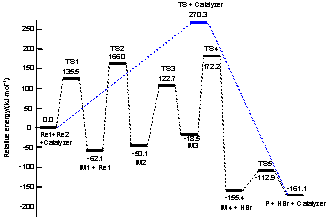1 Lei, Y. Q. New Energy-materials, Tianjing University Press, Tianjing, 2002, p. 222 (in Chinese). (雷永泉, 新能源材料, 天津大学出版社, 天津, 2000, p.222.)  2 Goetzberger, A.; Hebling, C.; Schock, H. W. Mater. Sci. Eng. R 2003, 40, 1. 2 Goetzberger, A.; Hebling, C.; Schock, H. W. Mater. Sci. Eng. R 2003, 40, 1.  3 Zhang, Z. H.; Li, L. L.; Ye, C. P.; Yang, P. H. Organic Solar Cells and Plastic Cells, Chemical Industry Press, Beijing,2006, p. 227 (in Chinese). (张正华, 李陵岚, 叶楚平, 杨平华, 有机太阳能电池与 塑料太阳能电池, 化学工业出版社, 北京, 2006, p. 227.)4 Zhao, Y.; Guo, X. Y.; Xie, Z. Y. J. Mol. Sci. 2007, 23, 1 (in Chinese). (赵云, 郭晓阳, 谢志元, 分子科学学报, 2007, 23, 1.)5 Markus, C. S.; David, M.; Markus, K.; Patrick, D.; Christoph, W.; Alan, J. H.; Christoph, J. B. Adv. Mater. 2006, 16,789.6 Christoph, J. B.; Chritoph, W. Adv. Funct. Mater. 2002, 12,709. 3 Zhang, Z. H.; Li, L. L.; Ye, C. P.; Yang, P. H. Organic Solar Cells and Plastic Cells, Chemical Industry Press, Beijing,2006, p. 227 (in Chinese). (张正华, 李陵岚, 叶楚平, 杨平华, 有机太阳能电池与 塑料太阳能电池, 化学工业出版社, 北京, 2006, p. 227.)4 Zhao, Y.; Guo, X. Y.; Xie, Z. Y. J. Mol. Sci. 2007, 23, 1 (in Chinese). (赵云, 郭晓阳, 谢志元, 分子科学学报, 2007, 23, 1.)5 Markus, C. S.; David, M.; Markus, K.; Patrick, D.; Christoph, W.; Alan, J. H.; Christoph, J. B. Adv. Mater. 2006, 16,789.6 Christoph, J. B.; Chritoph, W. Adv. Funct. Mater. 2002, 12,709.  7 Svensson, M.; Zhang, F.; Veenstra, S. C.; Verhees, W. J. H.; Hummelen, J. C.; Kroon, J. M.; Inganas, O.; Andersson, M. R. Adv. Mater. 2003, 15, 988. 7 Svensson, M.; Zhang, F.; Veenstra, S. C.; Verhees, W. J. H.; Hummelen, J. C.; Kroon, J. M.; Inganas, O.; Andersson, M. R. Adv. Mater. 2003, 15, 988.  8 Takakazu, Y.; Qiang, F.; Takashi, M. Macromolecules2003, 36, 4262. 8 Takakazu, Y.; Qiang, F.; Takashi, M. Macromolecules2003, 36, 4262.  9 Liu, Z. Y.; Li, Y. J.; Huang, P. C. Acta Chim. Sinica 2008,66, 999 (in Chinese). (刘中义, 李彦军, 黄鹏程, 化学学报, 2008, 66, 999.)10 Zhang, F. L.; Li, L. C.; Xu, B. H.; Tian, A. M. Acta Chim. Sinica 2009, 67, 45 (in Chinese). (张福兰, 李来才, 徐伯华, 田安民, 化学学报, 2009, 67,45.)11 Zhang, F. L.; Zhang, D.; Hu, W. H.; Li, L. C. Acta Chim. Sinica 2010, 68, 760 (in chinese). (张福兰, 张迪, 胡武洪, 李来才, 化学学报, 2010, 68,760.)12 Delley, B. J. Chem. Phys. 1990, 92, 508.13 Delley, B. J. Chem. Phys. 2000, 113, 7756.14 Perdew, J. P.; Wang, Y. Phys. Rev. B 1992, 45, 13244. 9 Liu, Z. Y.; Li, Y. J.; Huang, P. C. Acta Chim. Sinica 2008,66, 999 (in Chinese). (刘中义, 李彦军, 黄鹏程, 化学学报, 2008, 66, 999.)10 Zhang, F. L.; Li, L. C.; Xu, B. H.; Tian, A. M. Acta Chim. Sinica 2009, 67, 45 (in Chinese). (张福兰, 李来才, 徐伯华, 田安民, 化学学报, 2009, 67,45.)11 Zhang, F. L.; Zhang, D.; Hu, W. H.; Li, L. C. Acta Chim. Sinica 2010, 68, 760 (in chinese). (张福兰, 张迪, 胡武洪, 李来才, 化学学报, 2010, 68,760.)12 Delley, B. J. Chem. Phys. 1990, 92, 508.13 Delley, B. J. Chem. Phys. 2000, 113, 7756.14 Perdew, J. P.; Wang, Y. Phys. Rev. B 1992, 45, 13244.  15 Halgren, T. A.; Lipscomb, W. N. Chem. Phys. Lett. 1977,49, 225. 15 Halgren, T. A.; Lipscomb, W. N. Chem. Phys. Lett. 1977,49, 225.  16 Braga, A. A. C.; Morgon, N. H.; Ujaque, G.; Lledos, A.; Maseras, F. J. Organomet. Chem. 2006, 691, 4459. 16 Braga, A. A. C.; Morgon, N. H.; Ujaque, G.; Lledos, A.; Maseras, F. J. Organomet. Chem. 2006, 691, 4459.  17 Wang, P. Y.; Li, L. C.; Yang, C.; Li, Y. R. J. Phys. Chem. A2008, 112, 435. 17 Wang, P. Y.; Li, L. C.; Yang, C.; Li, Y. R. J. Phys. Chem. A2008, 112, 435.  18 Cao, M. J.; Chen, W. K.; Liu, S. H.; Xu, Y.; Li, J. Q. Acta Phys.-Chim. Sin. 2006, 22, 11 (in Chinese). (曹梅娟, 陈文凯, 刘书红, 许莹, 李俊篯, 物理化学学 报, 2006, 22, 11.) 18 Cao, M. J.; Chen, W. K.; Liu, S. H.; Xu, Y.; Li, J. Q. Acta Phys.-Chim. Sin. 2006, 22, 11 (in Chinese). (曹梅娟, 陈文凯, 刘书红, 许莹, 李俊篯, 物理化学学 报, 2006, 22, 11.) |
